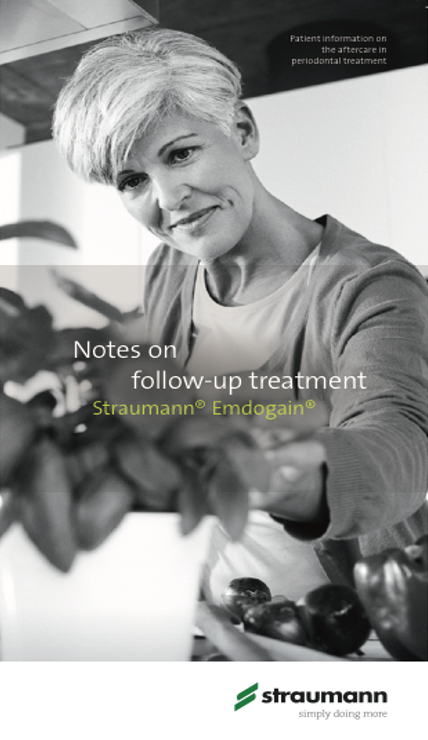Non-surgical periodontal treatment after care instructions
Periodontal surgery can be very simple or may be complicated depending on the circumstances of your case. Post-operative care is very important. Unnecessary pain and the complications of infection and swelling can be minimized if the instructions are followed carefully
Immediately following surgery:
If bleeding occurs, bite on the gauze pad provided by placing it over the surgical site for 20 minutes after this time, the gauze pad should be removed and discarded and replaced by another gauze pad. Refer to the section on BLEEDING for specific details.
Avoid vigorous mouth rinsing or touching the wound area following surgery. This may initiate bleeding by causing the blood clot that has formed to become dislodged.
To minimize any swelling, place ice packs to the sides of your face where surgery was performed. Refer to the section on SWELLING for explanation.
Take the prescribed pain medications as soon as you can so it is digested before the local anaesthetic has worn off. Having something of substance in the stomach to coat the stomach will help minimize nausea from the pain medications. Refer to the section on PAIN for specific details.
Restrict your activities the day of surgery and resume normal activity when you feel comfortable. If you are active, your heart will be beating harder and you can expect excessive bleeding and throbbing from the wound.
NO SMOKING UNDER ANY CIRCUMSTANCES.
Immediately following surgery:
Generally, you should expect less bleeding than after a tooth extraction because the gum will be secured with small sutures (stitches). It will usually subside quickly, and stop within an hour or two after surgery. A little oozing is normal (blood stained saliva) and may persist for several hours. If bleeding does occur, minimize it by: sitting upright, do not be excited, maintain constant pressure on the gauze (no talking or chewing) and minimize physical exercise.
1) If Excessive bleeding (your mouth fills up rapidly with blood) place the provided gauze pad on the surgical area with some pressure for 30 to 45 minutes.
2) Remove the gauze after 30 to 45 minutes, and replace it with a new piece of gauze if you are still bleeding. It is important to make sure the gauze is directly on the surgical site. Firm pressure for another hour should stop the bleeding.
3) If all else fails, call us for further instructions.
Swelling:
The swelling that is normally expected is usually proportional to the surgery involved. Where grafting is carried out, there may be two sites that could bleed and swell.
If there was a reasonable amount of cheek or lip retraction involved with your procedure, then it would be appropriate to apply ice on the outside of the face on the affected side. The swelling will not become apparent until the day following surgery and will not reach its maximum until 2-3 days post-operatively.
The swelling may be minimized by the immediate use of ice packs. Sealed plastic bags filled with ice, ice packs, or a bag of frozen peas or corn wrapped in a clean washcloth/tea towel should be applied to the side of the face where surgery was performed.
The ice packs should be applied 20 minutes on/20 minutes off for the afternoon and evening immediately following your extraction. After 24 hours, ice has no beneficial effect.
If swelling or jaw stiffness has persisted for several days, there is no cause for alarm. Soft, puffy swelling that you can indent with your finger after oral surgery is very normal.
Bright red, rock hard, hot swelling that does not indent with finger pressure which is getting bigger by the hour would suggest infection. This usually would develop around day 3-4 after surgery when you would expect swelling to be going down, not up. If this should occur, please call us at the number provided above.
Pain:
Pain or discomfort following surgery may last from a few days to 2 weeks, by a decreasing amount. For most patients, it seems they rely mainly on Paracetamol or Ibuprofen by the second day.
Many medications for pain can cause nausea or vomiting. It is wise to have something of substance in the stomach (yogurt, for soft food) before taking prescription pain medicines and/or over the counter pain medicines (especially Ibuprofen).
For moderate pain, one or two tablets of Paracetamol 500mg (maximum 1g every 6 hours) or Ibuprofen 200mg (maximum 400mg every 8 hours), Do not take Ibuprofen if you suffer with Asthma, had a reaction to it in the past or have a history of stomach ulcers.
Depending on your procedure, if severe pain might be expected, stronger pain killers will be prescribed, take the tablets prescribed for pain as directed every 4 hours in addition to the Paracetamol or Ibuprofen. The prescribed pain medicine will make you groggy and will slow down your reflexes.
Do not drive a car or work around or operate heavy machinery if you are taking prescription pain medicine.
Alcohol and prescription pain medicines do not mix!
Antibiotics:
If prescribed to you, especially if a graft material was used, be sure to take the prescribed antibiotics as directed until they are completely gone regardless of how good you may feel to help prevent infection.
Diet:
Chew where your natural teeth are and not on the surgical site throughout the whole healing phase.
Drink plenty of fluids. Try to drink 5-6 eight 250-300ml glasses per day but avoid direct rinsing the surgical area for the first few days.
Avoid hot liquids or food while you are numb so you don’t burn yourself.
Soft food and liquids can be eaten on the day of surgery.
Return to a normal diet as soon as possible unless otherwise directed. You will find eating multiple small meals is easier than three regular meals for the first few days. You will feel better, have more strength, less discomfort and heal faster if you continue to eat.
Oral Hygiene:
Good oral hygiene is essential to good healing.
You may brush your teeth, avoiding the surgical area. Be gentle, and do not spit or rinse forcefully.
Start brushing the teeth in the surgical area after 1 week but avoiding the gum, and be very gentle on the stitches.
Warm salt water rinses (teaspoon of salt in a cup of warm water - boiled water that is allowed to cool) should be used at least 2-3 times a day especially after meals starting the day after surgery.
Additionally, in most cases you will be provided and instructed to use Corsodyl Mouthwash. 24 hours following the surgery, Corsodyl should be used twice daily, after breakfast and before bed. Be sure to rinse for at least 30 seconds then spit it out.
Smoking:
Smoking retards healing dramatically. Nicotine constricts blood vessels which slows the healing of surgery sites and affects the long-term health of the gum and bone.
Smoking and oral surgery do not mix. There is a documented increased failure rate in patients who smoke.
If you choose to smoke, you do so at the risk causing failure of the procedure due to poor healing and increased gum disease in smokers.
Activity:
You should keep physical activities to a minimum for 12-24 hours following surgery.
If you are considering exercise, throbbing or bleeding may occur. If this occurs, you should discontinue exercising.
Keep in mind that you are probably not taking normal nourishment. This may weaken you and further limit your ability to exercise.

